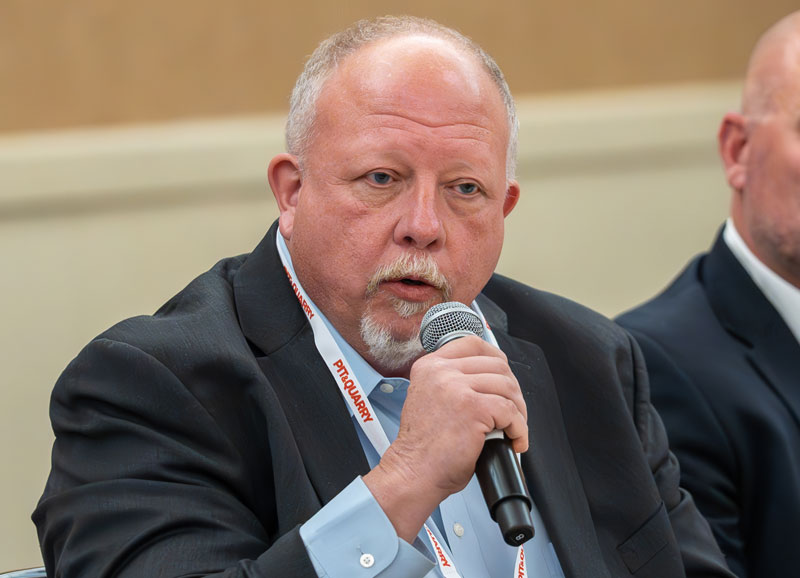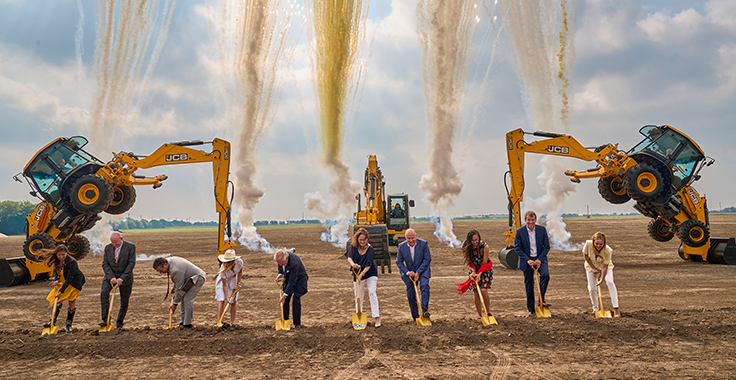The following transcript was edited for brevity and clarity from one of two concurrent Jan. 31 discussions at the 2025 Pit & Quarry Roundtable & Conference at The Wigwam Resort. Part 2 can be found here.
JACK KOPANSKI (PIT & QUARRY): For everyone: How would you characterize your feelings for the year ahead as it pertains to the aggregate industry? How does last year’s presidential and congressional election influence your outlook for the year? Did your company bring a backlog into the new year? What investments are you making to better your business in 2025? What business concerns do you have this year?
For producers: What are your aggregate sales expectations for 2025? What dynamics will drive or hinder demand this year? What are your expectations for Infrastructure Investment & Jobs Act (IIJA) funds in your market this year? Do you expect continued good pricing momentum in 2025?
For equipment suppliers: What are your sales expectations for 2025 in the aggregate industry? What adjustments have you made to your manufacturing processes or distribution capabilities to meet customer needs this year and beyond?
JASON WADDELL (JONES BROS. CONTRACTORS): 2025 will be another positive year. Having some political certainty following the election has helped lift some of the market. There is a sense of being glad it’s over, and I think there’s an uptick in optimism.
For us, I think 2025 will be a pretty standard, good year. We’re in west Tennessee, so we’re a rural market. We don’t necessarily receive all the benefits of the IIJA that we see around us. Our goal is to continue gaining brand recognition in the market and growing out that way.

MICHAEL KELLY (MASTER POWER TRANSMISSION):We’re excited for 2025. We think there are going to be a lot of opportunities in store for domestic equipment manufacturers. We made significant investments in ‘24 to support that opportunity, as well as for operational efficiencies. We’re excited for what’s to come.
SHELDON SHEPHERD (TECWEIGH): We saw an uptick in inquiries as we approached the election and certainly after the election. We have a very positive outlook for 2025.
One thing we’re a bit concerned about is tariffs. Our equipment is made in the U.S., but there are components we use that have origins outside of the U.S. If the U.S. puts tariffs on those, those companies may pass those tariffs along to us, and that could potentially increase our costs unexpectedly. We’re approaching that cautiously.
NICK PEARMAN (ROGERS GROUP): I think everyone has settled down following the election. Something that will have a big impact is lower energy prices. The lower energy prices get, the easier it is on us when you look at how energy-intensive a lot of our process is. That’s going to play a huge role in profitability.
We’re expecting things to pick up in 2025. I’m hoping it will be earlier than June, but I don’t think that will be the case due to interest rates. Rogers Group has been spending a lot of money reinvesting in our heritage plants and expanding. We’re also investing in becoming more efficient and lowering our operating costs. We’re gearing up and getting ready for what is, hopefully, a big rush. But I’m cautiously optimistic about that, given interest rates.
CHRIS SUMMERS (BURGEX MINING CONSULTANTS): If the first few weeks of the year are any indication, it’s going to be a busy year. We’re getting a lot of interest in greenfield sites. I think the election had a lot to do with it. In our market (Salt Lake City), the biggest challenge we’re facing right now is permitting. I think we’re going to continue to see that in the short term.
CODY LADD (KRAEMER MINING & MATERIALS): I haven’t really talked up 2025 too much. Then again, I got completely burned by the weather [in 2024], so I’m trying to figure out the market a little bit.
One thing I focused on is reshoring manufacturing. We’ve had great manufacturing numbers lately – a lot of that coming in the way of electronic vehicles, superconductors and data centers. How much manufacturing reshores back to the U.S.? I was focused on that before Trump got in office and now, with Trump in office, I think we’re going to see that accelerated quite a bit.
BRYAN SCEPANIAK (WM. D. SCEPANIAK): My concern with the Republican election win is that it’s just a good face and we’re not going to go anywhere with it. With Donald Trump being elected and a Republican Congress, it’s good in theory. They usually favor our industry. But if we don’t push our representatives to actually pass bills and legislation in our favor, we’re not going to go anywhere with it, and then we’ll be in the same spot in 2028 going: ‘What happened? Why didn’t we get anything done?’
The ‘Made in America’ sticker and thought process don’t really mean what they used to, especially when consumers have gotten drunk on the cheap prices of foreign products. It makes it difficult to justify spending 10 percent more on a product just because it was made in America.

KELAN MOYLAN (TCI MANUFACTURING): A portion of our business is building portable equipment. We’ve seen that industry be tepid, at best. The plant-building side of our company has been off the charts. We had a record year in 2024. We’re fairly certain we’re going to beat that record in 2025.
I look at the metrics of how busy we’ve been and the excitement for new plant and greenfield development, and I think that bodes well for everyone in the industry.
JONATHAN HART (WASHINGTON ROCK QUARRIES): We’re cautiously optimistic about 2025. Revenue and profits are on the rise, we have good price floors, and we see a lot of positive things.
At the same time, when we look at things like the labor market, the new presidential administration and how all that comes together, it brings up a lot more questions than answers.
We’ll probably see a lot more tariffs come through. That’s going to put pressure on equipment prices and how we treat our reserves. We will see a lot more of our mine sites get farther away from the areas that they serve. Some of that might be offset by technology, transportation through rail, barge or other means.
Related: Expectations for the 2025 aggregate market (Part 2)












